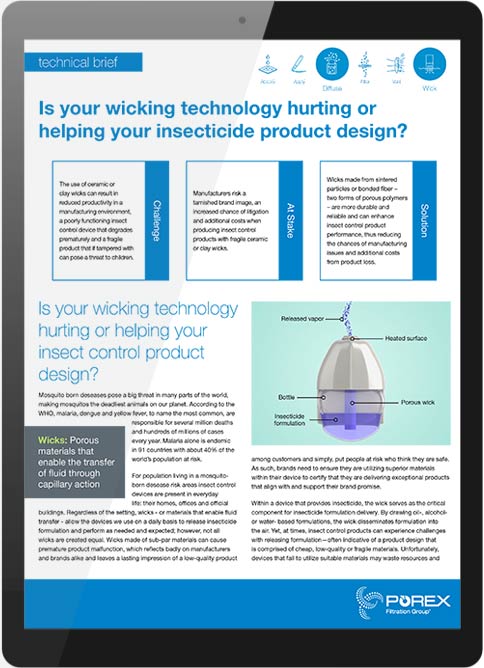Why download the tech brief:
- Understand how wicks function and their role in the overall performance of a pest control device
- Explore how the use of ceramic wicks can cause pest control devices to malfunction prematurely, reduce productivity in a manufacturing environment and increase the possibility of litigation and additional costs
- Uncover the strength behind sintered particles and bonded fiber, two forms of porous polymers, that alleviate challenges associated with ceramic wicks while improving performance and reducing risk

Please download the tech brief by filling out this short form:

